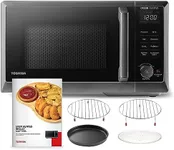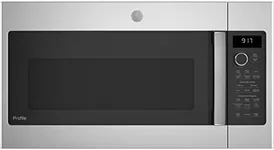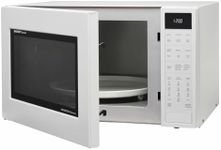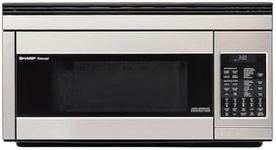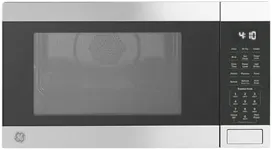Buying Guide for the Best Convection Microwaves
Choosing the right convection microwave can be a game-changer in your kitchen, offering the convenience of a microwave with the added functionality of a convection oven. This means you can not only reheat and defrost but also bake, roast, and grill. To find the best fit for your needs, it's important to understand the key specifications and how they align with your cooking habits and preferences.CapacityCapacity refers to the internal size of the microwave, usually measured in liters. This is important because it determines how much food you can cook at once. Smaller capacities (20-30 liters) are suitable for individuals or small families who primarily use the microwave for reheating and simple cooking. Medium capacities (30-40 liters) are ideal for average-sized families and those who like to cook a variety of dishes. Larger capacities (40+ liters) are best for large families or those who frequently entertain guests and need to cook larger portions.
Power OutputPower output, measured in watts, indicates how quickly and evenly the microwave can cook food. Higher wattage means faster cooking times and more efficient heating. Microwaves with 700-900 watts are generally sufficient for basic tasks like reheating and defrosting. For more advanced cooking, such as baking and roasting, look for models with 1000 watts or more. Consider your cooking needs: if you often prepare meals from scratch, a higher wattage will be beneficial.
Cooking ModesConvection microwaves come with various cooking modes, including microwave, convection, grill, and combination modes. These modes are important because they offer versatility in cooking. Basic models may have just microwave and convection modes, suitable for simple tasks. More advanced models include grill and combination modes, allowing you to brown, crisp, and cook more complex dishes. Think about the types of meals you prepare and choose a microwave with the modes that will best support your cooking style.
Pre-set ProgramsPre-set programs are automatic settings for specific dishes like popcorn, pizza, or baked potatoes. These programs are important because they simplify cooking by automatically adjusting the time and power levels. If you prefer convenience and often cook the same types of food, look for a microwave with a variety of pre-set programs. If you enjoy experimenting with recipes and prefer manual control, this feature may be less critical.
Turntable vs. FlatbedMicrowaves typically come with either a turntable or a flatbed design. A turntable rotates the food to ensure even cooking, while a flatbed uses advanced technology to distribute microwaves evenly without the need for rotation. Turntables are common and effective for most users, but they can limit the size and shape of dishes you can use. Flatbeds offer more flexibility and can accommodate larger or irregularly shaped dishes. Consider your cooking habits and the types of cookware you use to decide which design suits you best.
Ease of CleaningEase of cleaning is an important factor, especially if you use your microwave frequently. Look for features like a removable turntable, smooth interior surfaces, and steam cleaning functions. These features make it easier to wipe down the interior and remove food splatters. If you value convenience and want to minimize maintenance, prioritize models with these easy-to-clean features.
Size and DesignThe size and design of the microwave should fit well in your kitchen space and complement your decor. Measure the available space to ensure the microwave will fit, considering ventilation requirements. Design elements like color, finish, and control panel layout can also impact your choice. Choose a microwave that not only fits your space but also matches your kitchen's aesthetic and is easy for you to use.



